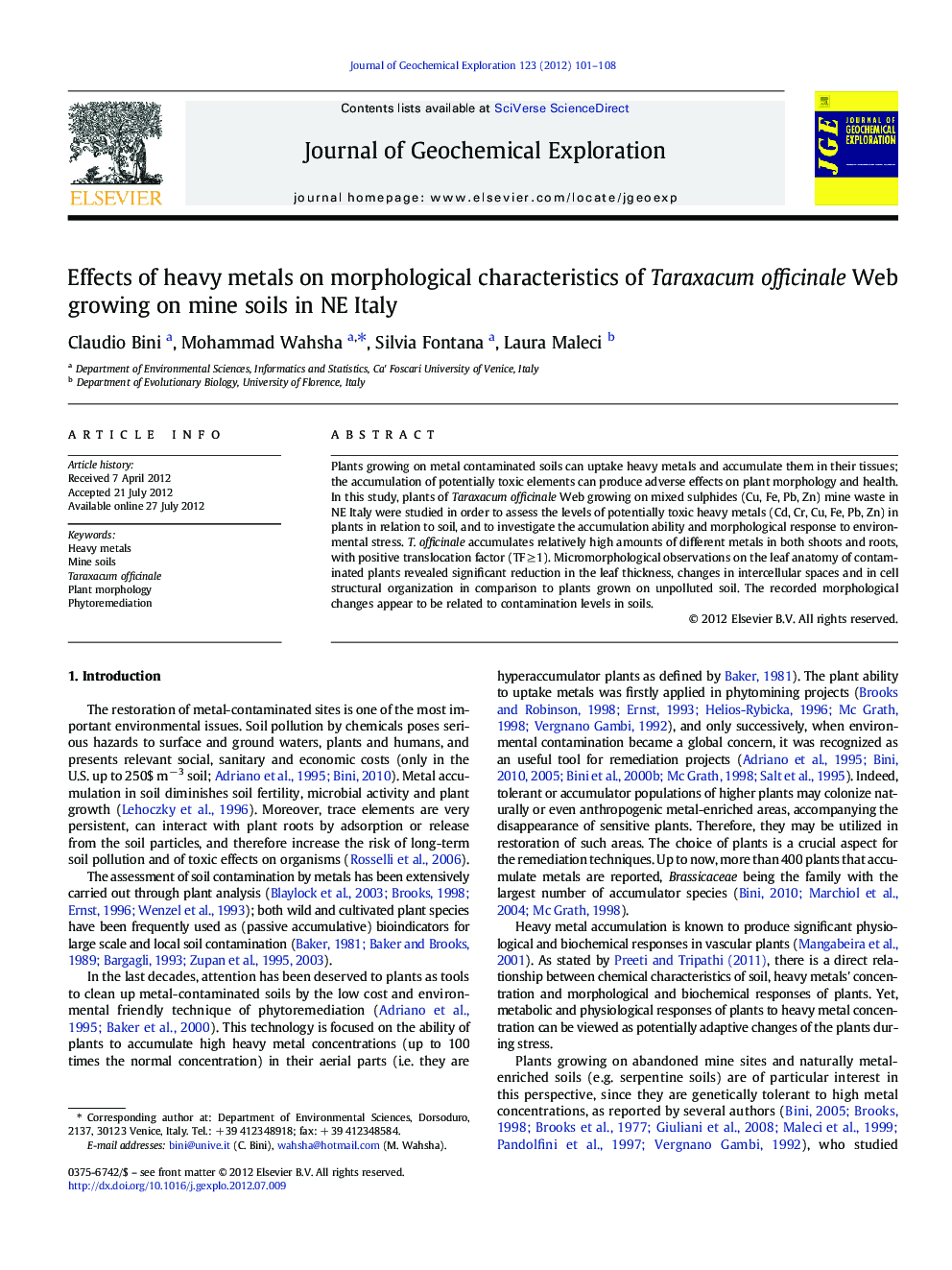| Article ID | Journal | Published Year | Pages | File Type |
|---|---|---|---|---|
| 4457571 | Journal of Geochemical Exploration | 2012 | 8 Pages |
Plants growing on metal contaminated soils can uptake heavy metals and accumulate them in their tissues; the accumulation of potentially toxic elements can produce adverse effects on plant morphology and health. In this study, plants of Taraxacum officinale Web growing on mixed sulphides (Cu, Fe, Pb, Zn) mine waste in NE Italy were studied in order to assess the levels of potentially toxic heavy metals (Cd, Cr, Cu, Fe, Pb, Zn) in plants in relation to soil, and to investigate the accumulation ability and morphological response to environmental stress. T. officinale accumulates relatively high amounts of different metals in both shoots and roots, with positive translocation factor (TF ≥ 1). Micromorphological observations on the leaf anatomy of contaminated plants revealed significant reduction in the leaf thickness, changes in intercellular spaces and in cell structural organization in comparison to plants grown on unpolluted soil. The recorded morphological changes appear to be related to contamination levels in soils.
► Toxic effects of heavy metals on Taraxacum officinale. ► Changes in leaf morphology and ultrastructure of contaminated plants. ► Relations between morphological changes and contamination levels in soils.
